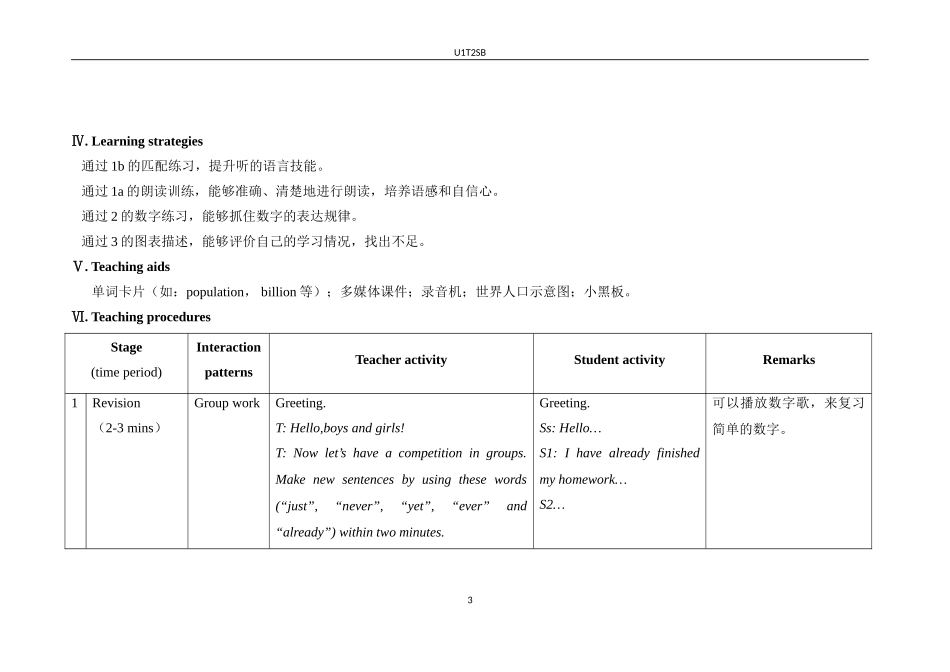U1T2SBSection BⅠ. Material analysis本课是九年级第一单元第二话题的第二课时,主活动是 1a 和 2。本课通过谈论各国的人口数量,复习比较级的基本句型,学习高位数的表达。1b 通过连线题,训练学生听懂高位数的能力。1c 通过把对话转换为段落来巩固 1a 的内容。2 重点学习高位数的读法。3 让学生通过读图来操练高位数的读法。为了降低 1a 和 3 的难度,建议将 2 调整到 1a 前,作为一个读前的活动。通过谈论各国人口的现状,引导学生树立正确的人口观念。 Ⅱ.Teaching aims1.Knowledge aims: 掌握本课的重点词汇和短语,复习形容词比较级的用法,继续学习数字表达。2.Skill aims: 能听懂高位数字,并作出正确判断。能通过整合对话内容,提升综合语言运用能力。3.Emotional aims: (optional)增强学生对人口问题的认识,了解各国的人口现状。增强学生关注社会的意识。1九年级上册教学案例设计4.Culture awareness: (optional)通过对比发达国家和发展中国家的人口增长情况,引导学生树立正确的人口观念。Ⅲ. The key points and difficult points1. Key points: Words and phrases: population, billion, increase, reach, Russia, luckily, policy, measure in developed/ developing countries, have a population of…, increase by, carry out, the one-child policySentences: (1) It says the world has a population of 6.8 billion. (2) It is increasing by 80 million every year.(3) Which country has the largest population? (4) —What’s the population of the USA.?—It’s… (5) So it is. (6) The population problem is more serious in developing countries.Grammar: Go on learning and using Present Perfect. 2. Difficult points: 能更快更好的听懂和朗读高位数字。能正确使用数字表达各国的人口现状。2U1T2SBⅣ. Learning strategies 通过 1b 的匹配练习,提升听的语言技能。 通过 1a 的朗读训练,能够准确、清楚地进行朗读,培养语感和自信心。 通过 2 的数字练习,能够抓住数字的表达规律。 通过 3 的图表描述,能够评价自己的学习情况,找出不足。Ⅴ. Teaching aids单词卡片(如:population, billion 等);多媒体课件;录音机;世界人口示意图;小黑板。Ⅵ. T...


